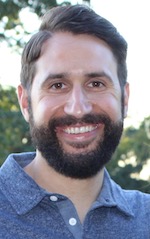EVIDENCE REVIEW: INCREASE YOUR THROWING VELOCITY IN 6 WEEKS
The TD Athletes Edge Evidence Review is designed to provide you with evidence-based knowledge in an easy-to-digest format. We find the studies, make sense of the research, and you take the evidence back to the trenches.
A few extra miles per hour on your fastball can change everything. This study set out to determine if baseball players could increase their velocity in just 6 weeks.
THE STUDY:
Comparison of Three Baseball-Specific 6-Week Training Programs on Throwing Velocity in High School Baseball Players
STUDY DETAILS:
- Featured Author(s): Kevin Wilk, PT, DPT & Dr. James Andrews
- Subjects: 68 High School Baseball Players between ages of 14-17
- Methods: Equally and randomly split into 4 training groups.
- Group 1: Throwers Ten (common arm exercises) training - 3x/wk
- Group 2: Keiser Pneumatic (resisted cable exercises) training - 3x/wk
- Group 3: Plyometric (upper-body medicine ball) training - 3x/wk
- Group 4: No extra training beyond practice / games
- Results:
- Group 1: INCREASED velocity 1.7% (Throwers Ten )
- Group 2: INCREASED velocity 1.2% (Keiser Pneumatic)
- Group3: INCREASED velocity 2.0% (Plyometrics [med-ball])
- Group 4: No significant change in velocity
FINDINGS:
- All 3 groups who did baseball-specific training improved their velocities.
- Exercises that utilize hip and shoulder acceleration (i.e. medicine ball drills) resulted in greater velocity improvements.
- The author reviewed similar studies and found that 4-10 weeks of baseball-specific resistance training can increase throwing velocity by up to 4.1%.
- Sprinting was shown to increase velocity while jogging had no effect when added to resistance training.
STUDY LIMITATIONS:
- Velocities were tested with the thrower using the two-step throw, versus throwing off a mound.
- Throwing volume was dependent on playing time in the summer league.
- The age range (14-17 years old) - a lot can happen in those formative years related to strength and muscle development.
- This was not a position-specific study (subjects could have been pitchers, catchers, etc.)
- The study was during a summer baseball league. Pre-season, regular season, and off-season were not accounted for.
- The duration of the study was only 6 weeks. Though it is encouraging to see positive results in that short of time, long duration studies would help us better understand the full potential of arm care and it's effects on velocity.
Q & A:
Will velocity drop if I don't continue the program?
It appears that results last as long as the program is maintained.
"A maintenance resistance training program of 1-2 times per week may be adequate to maintain the performance enhancing effects of a baseball-specific resistance program."
Are medicine ball exercises alone the best way to improve velocity?
A previous study showed baseball players who combined plyometrics with lifting were able to increase throwing velocities while those who only lifted showed no increase. One can safely assume that lifting alone or plyometrics alone would not be the most effective approach.
"The result of this study demonstrated that all 3 short-term baseball-specific resistance training programs were effective in enhancing throwing velocity in high school baseball players, but It was not conclusive that one resistance training program was more effective than another resistance training program in increasing throwing velocity."
Can conditioning help with velocity?
Yes but focus on sprinting versus long, slow running. In a study focused on top-level college baseball players, the group that combined weight-training with sprinting pumped up their throwing velocity by a whopping 3%.
"It can be concluded from these data that aerobic activities may not be an effective manner to increase throwing velocity."
MY THOUGHTS:
It's not just about the pitcher.
Avoid the assumption that this study has implications for pitchers only. This is encouraging for any overhead athlete who is looking to become less susceptible to injury and more explosive. Specifically, the medicine ball training would be an important component of any overhead athlete - tennis and volleyball players, even quarterbacks.
Don't be a one trick pony.
This study confirms what I have found in the baseball-specific strength and conditioning trenches: If you want to throw harder, you have to incorporate acceleration-based training for the hips and shoulder. The key is truly the hips - medicine ball exercises develop hip mobility, stability, power and explosiveness. By combining classic resistance training, plyometric-based medicine ball exercises and evidence-based rotator cuff strengthening you can become a more durable, powerful and explosive overhead athlete.
RELATED: Killer baseball-specific medicine ball exercises from Eric Cressey
LIKE WHAT YOU READ? SIGN UP NOW TO GET THE LATEST TIPS AND ADVICE
Scott DiFrancesco, ATC, CSCS, SASTM was the Head Athletic Trainer for the Double-A New York Yankees affiliate (Trenton Thunder). He is a co-founder and Director of Performance Operations of TD Athletes Edge, where he provides fitness, recovery and nutrition guidance to aspiring and professional athletes.
For training and nutrition advice, follow us on:
• Instagram http://instagram.com/tdathletesedge
• Twitter http://twitter.com/tdathletesedge
• Facebook http://www.facebook.com/tdathletesedge
• YouTube https://www.youtube.com/user/tdifranc1
• Podcast http://www.tdathletesedge.com/podcast
• Website http://www.tdathletesedge.com
References:
Cressey, E. (2015, March 26). Exercise of the Week: Split-Stance Anti-Rotation Medicine Ball Scoop Toss. Retrieved April 1, 2015, from www.ericcressey.com
Escamilla, R., Ionno, M., DeMahy, M., Fleisig, G., Wilk, K., Yamashiro, K., & Andrews, J. (2012). Comparison of Three Baseball-Specific 6-Week Training Programs on Throwing Velocity in High School Baseball Players. Journal of Strength & Conditioning Research, 26(7), 1767-1781. Retrieved April 1, 2015, from http://journals.lww.com/nsca-jscr/Pages/default.aspx
ABOUT THE AUTHOR

Scott DiFrancesco ATC, CSCS, SASTM spent 6 seasons as a Minor League Head Athletic Trainer in the New York Yankees organization, finishing in Double-A with the Trenton Thunder. His most proud accomplishment as a Yankee was being a member of the 2013 Eastern League Champions - Trenton Thunder. He is renowned for his evidence-based and scientific approach to fitness, training, nutrition, and recovery for athletes and fitness enthusiasts. Scott begins his pursuit of becoming an Osteopathic Physician in August of 2017 at NYIT in Old Westbury, NY.

